Best Practice Guidelines: Hospital Patient Administration
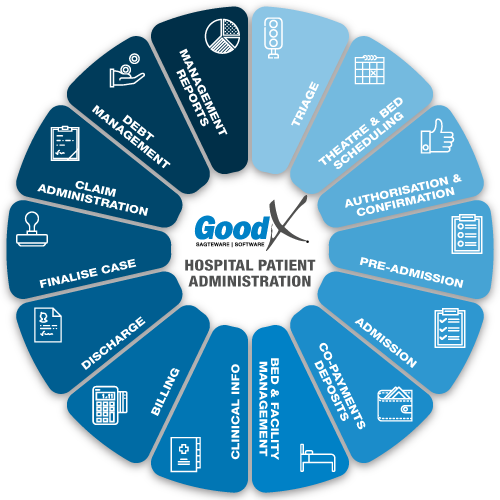
Copyright © 2019 GoodX Software. All rights reserved.
GoodX online Learning Centre
learning.goodx.co.za
8. Admission
Responsible Roles
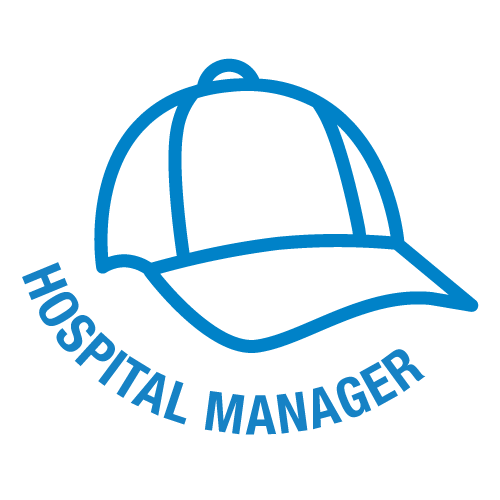 |
Ensure all the staff members have the correct resource to make the admission process as quick and efficient as possible. Ensure enough personnel at reception to handle all the admissions at peak times. Ensure the process between reception and the wards run smoothly that the patient can have a great experience. |
|---|---|
|
|
Check if the patient were pre-admitted before creating a new file. Check if all information is up to date and complete the information that is still outstanding. Scan all documents. Print the admission stickers. When there is a co-payment or deposit refer the patient to the cashiers before admitting the patient. Ensure the correct admission time. Refer the patient to the correct ward where they will be admitted into. Do a validation on the Debtor and on the Patient to ensure the correct information are on the system and that the medical aid is still active. A patient can also complete their information at the Kiosk. Print the patient admission form and all the consent forms that are not yet signed, let the patient sign or if the hospital has electronic signatures, the patient must sign electronically. Confirm the authorization is in place. |
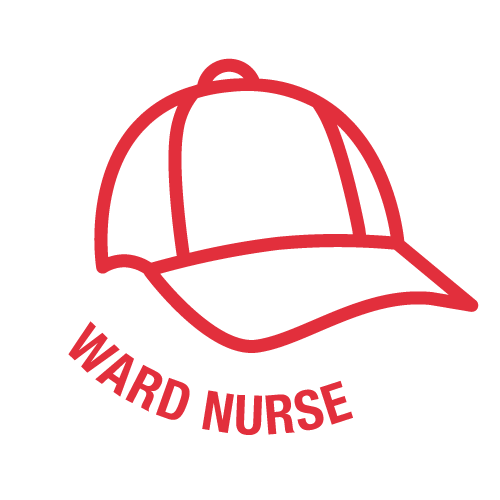 |
Assist the patient into the correct room and bed. Ensure the patient bed have clean linen on. Put the patient file at the patient bed and update the system to show the correct bed and ward on the patient file. Ensure the patient knows all the rules and safety rules at the hospital. ensure the patient know where all the necessaries are in the hospital. Communicate with the kitchen to ensure they know the special dietary of the patient. |
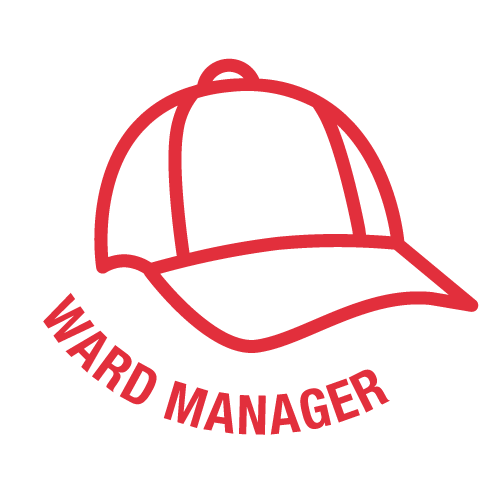 |
Confirm the patient has been admitted into the ward that was pre-admitted into each ward. Ensure enough staff members for the total of the patient that was admitted. Sent a confirmation to the doctor that the patient was admitted into the hospital. Ensure all staff members in the ward know how to treat the patient and update the admission list of the ward. |
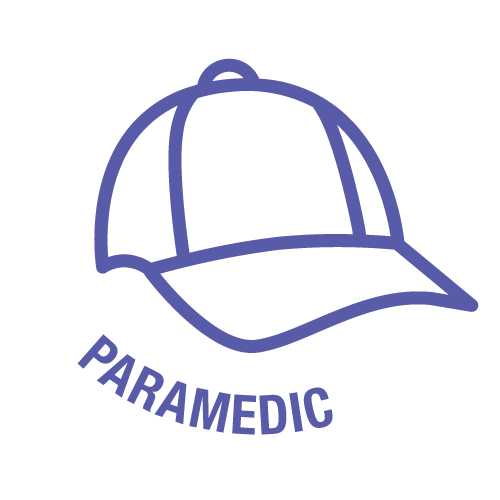 |
The paramedic can bring the patient to the hospital to be admitted. Ensure the patient has all the information or next of kin that can assist with all the information to be admitted into the hospital. Assist the receptionist with all the information of the patient. Ensure all clinical information are also available and filed into the patient file for the practitioner. |
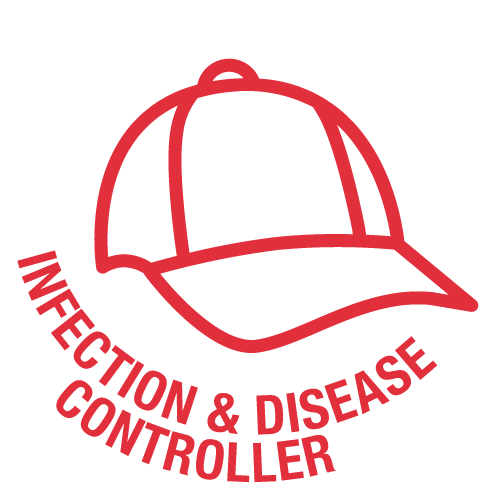 |
Check if the correct procedure is done to ensure the patient has no infection warning signs when the patient is admitted into the hospital. Check the ward and bed if the area and bedding are clean and sterile. Check the documentation to ensure the correct procedure were done and the patient was admitted to the correct ward and bed. |
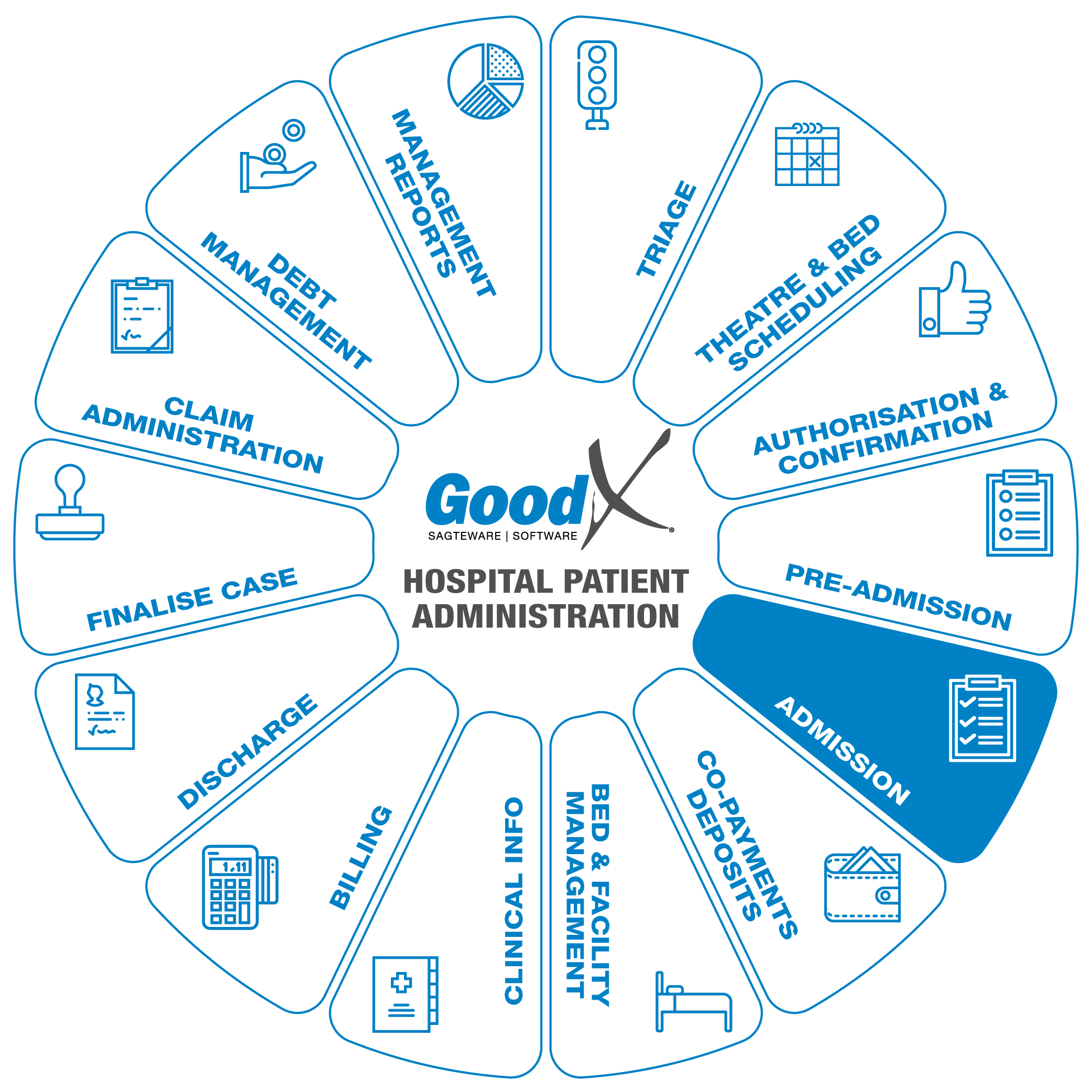 Purpose of Admission
Purpose of Admission
When a patient needs a procedure, operation or needs to sleep in a hospital for a certain illness the patient need to be admitted into the hospital. Admission will need the patient to sign consent forms and give permission for the admission into the hospital. Sign documents for the account at the hospital for the stay in the hospital. Ensure all documentation from the Main Member and the patient is in the file. The correct labels are printed that the personnel in the hospital know why the patient is there and who is the patient, to know any medical history and who to phone in an emergency.
Critical Steps of Admission
Admission will take place when the patient arrives at the hospital for admission to the hospital for the procedure, illness or emergency. There are different processes that need to be followed depending on the patient’s status.
Transfer the patient from a pre-admission status to a hospital in-patient status.
Where the patient has completed a pre-admission form, the admissions clerk is required to confirm the information captured during the pre-admission stage and to update any information where required as well as collect all outstanding mandatory information and documents.
Confirm all relevant details
- On the date of admission, the admissions clerk is to ensure that all patient details and main member details are correct and complete. Check the following:
- Medical aid card, ensure that the right medical aid is selected on GoodX. (Make a copy of the medical aid card, front, and back).
- Ensure that the right medical aid plan is selected.
- Patient address and contact details.
- Next of kin details.
- Make a copy of the main member’s ID.
- Ensure that the correct dependant is selected as the in-patient
- Ensure that the authorisation number is correct and valid.
- Collect all co-payments or deposits and any other outstanding amounts.
Admission without a Pre-Admission
It might happen from time to time that a patient is added to the theatre list at short notice and that the patient has not been Pre-Admitted on the system, or when a patient is an emergency case.
- Open a new Case.
- Collect and update the hospital system with all personal demographic information pertaining to the patient and main member.
- A copy of the medical aid card and ID book must be placed in the patient file.
- Collect and update GoodX with all Patient and Main member demographic information.
- Where authorisation is provided: Confirm with the scheme that the patient has a valid membership with a recognised medical aid or is a valid dependent of such a member.
- Validate the patient information.
- Where no authorisation is available, request medical aid members to contact their schemes and provide a pre-authorisation number and CPT4 Code. (Clinical Code for the procedure).
- Phone the medical aid for an authorisation number.
- Confirm the medical aid is paid and up to date.
- Confirm authorisation number is correct.
- Confirm CPT4 Code is Correct.
- Confirm the co-payment on the case, if any.
- Check records for any outstanding private portions on accounts from previous visits. Inform the patient and request the patient to visit the credit controller responsible to settle the account. Make a note on the file of any outstanding amounts for admission staff to follow up.
- Inform the patient of any co-payments, deposits or other outstanding amounts due by themselves and collect the amounts due prior to admission.
- All patients admitted with an injury while on duty must complete an injury report.
- Request the patient to complete and sign the printed admission form or case form or file coversheet as an acknowledgement that the information given is accurate.
Admission of private patients
- Private patients as a general rule do not have credit terms and all procedures and protocols should reflect this policy.
- Admission Clerks who work outside office hours should be vigilant for any credit alerts and check to see whether there are any other outstanding amounts on previous visits.
- Co-payments and deposits should always be insisted upon to be paid upfront. Admission staff should get a reasonable indication of the amount required by referring to the deposit list.
- Prior to calculating a private patient’s deposit, the following information must be obtained:
- Estimated number of minutes in the theatre
- Any additional medication or sutures that are not normally used during this type of procedure
- Any prosthetic devices if applicable
- Any co-morbidity risk
- Accounts that escalate in size and severity will require interim follow up with the main member and interim payments on a regular basis by the Credit Controller.
- Patients should be admitted as private in the following instances:
- No Reliable proof of medical aid membership or proof of being a dependant of a valid member.
- Medical aid membership but still in the waiting period.
- Exclusions to medical aid benefit specific to a procedure for which the patient is admitted.
- Patients with Hospital Plans and Medical Insurance Cover. (Where no credit agreement with insurer exists).
- Inform the credit control department if any credit alert exists for the patient.
- On discharge, the patient is to settle any outstanding amount on the account. If the account is not finalised, the outstanding amount is to be estimated, and the patient should be informed that it is an interim account and not the final account.
Print Admission Form / Patient to sign
- Print the Admission Form / Case Form or File Coversheet
- Request patient to sign the printed Admission Form as an acknowledgement that the information given is accurate and complete.
- The signed document is to be placed in the patient file.
Print Labels
- Patient labels can be customised according to the hospital's needs.
- Print patient labels
- One must be placed on the front of the patient file.
- The rest can be placed in the patient file.
- The patient file must accompany the patient to the ward.
